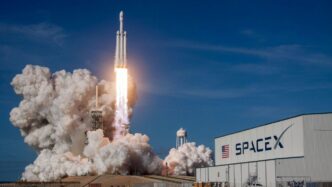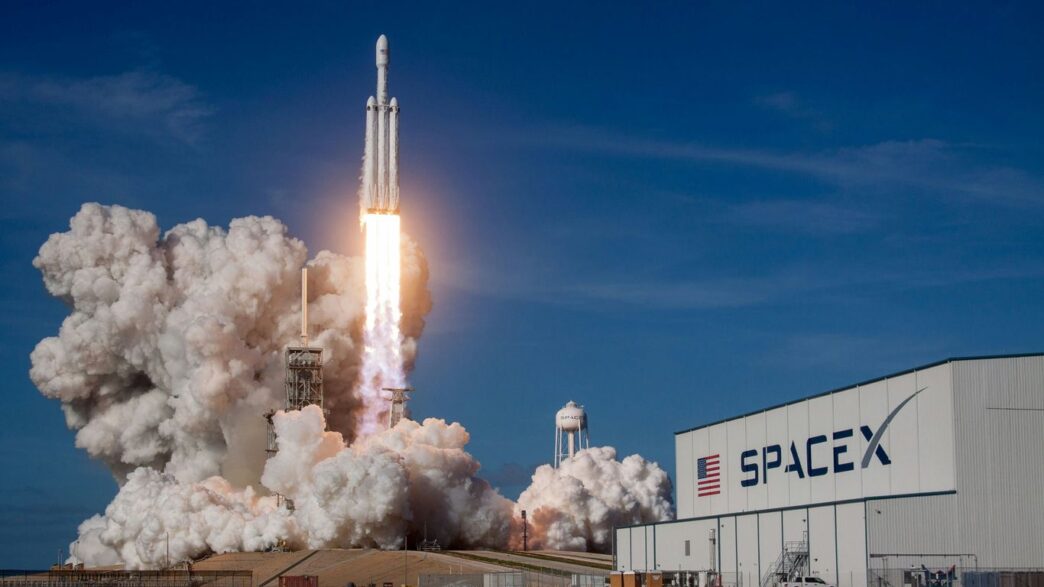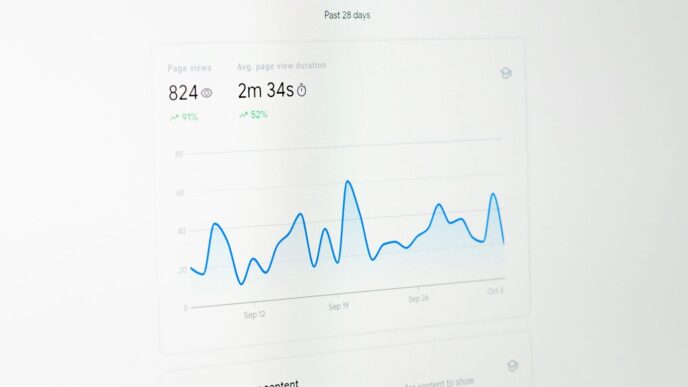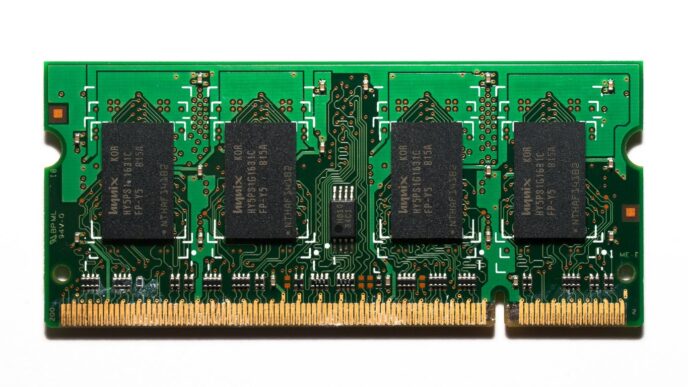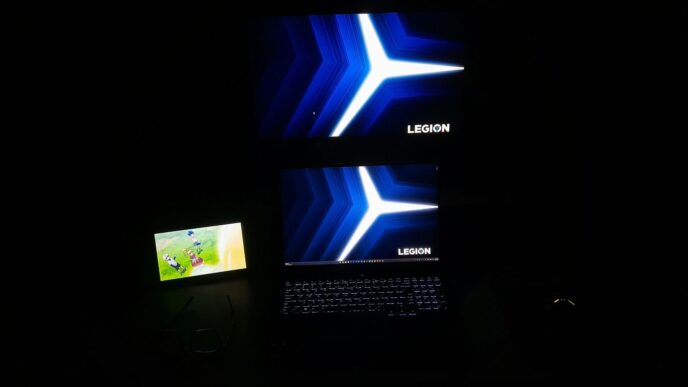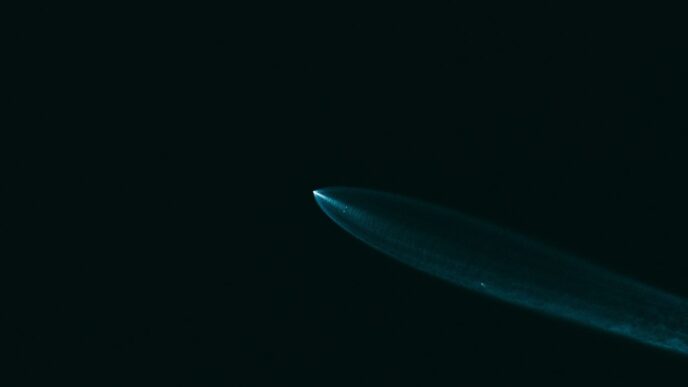Another day, another Falcon 9 launch. SpaceX sent up a fresh batch of Starlink satellites today, adding to their ever-growing internet constellation. It seems like these launches are happening all the time now, and today was no exception. We’ve got the details on where and when it lifted off, plus what it means for the Starlink network.
Key Takeaways
- SpaceX launched 28 new Starlink satellites today using a Falcon 9 rocket from Cape Canaveral Space Force Station.
- The Falcon 9 booster used for the Cape Canaveral launch, designated 1067, achieved a record 31st mission, showcasing SpaceX’s reusability goals.
- A separate Falcon 9 launch from Vandenberg Space Force Base also deployed Starlink satellites, with one of those being the 10,000th Starlink satellite to reach orbit.
- These launches continue to expand the Starlink constellation, which now serves millions of customers worldwide.
- SpaceX’s focus on reusable rockets like the Falcon 9 is helping to lower the cost of getting satellites into space.
Starlink Satellites Launch Today: SpaceX Falcon 9 Lifts Off
Well, it’s launch day again for SpaceX, and they’ve sent another batch of Starlink satellites up into orbit. Today, a Falcon 9 rocket took off, carrying 28 new satellites. It’s pretty wild how often these launches are happening now.
Cape Canaveral Launch Details
One of the launches today happened from Cape Canaveral Space Force Station in Florida. This particular Falcon 9 rocket, booster 1067, was making its 31st trip to space. That’s a lot of flights for one rocket part! After doing its job, the booster came back down and landed on a drone ship called "A Shortfall of Gravitas" out in the Atlantic. This whole process of reusing rockets is a big deal for SpaceX, helping to make spaceflight less expensive.
Vandenberg Space Force Base Liftoff
There was also a launch from Vandenberg Space Force Base in California. This mission also sent 28 Starlink satellites skyward. This launch marked the 132nd time a Falcon 9 has lifted off this year, which ties the record set last year, and we still have a good chunk of 2025 left. The booster used for this flight, designated 1088, made its 11th flight and landed on the "Of Course I Still Love You" drone ship in the Pacific Ocean.
Record-Breaking Falcon 9 Booster Missions
SpaceX is really pushing the limits with how much they can reuse their Falcon 9 boosters. Today’s launches are a perfect example. Booster 1067 from the Florida launch hit its 31st mission, a new record for that specific booster. The California launch also saw a booster land successfully, adding to the growing number of successful recoveries. This constant reuse is a key part of SpaceX’s plan to make getting things into space more affordable. It’s pretty amazing to think about how many times these rockets are flying and landing.
New Starlink Satellites Bolster Constellation
Today’s launch adds another batch of Starlink satellites to the growing network. SpaceX is really pushing the envelope with these launches, sending up more and more of these internet-beaming spacecraft. It’s pretty wild to think about how many are already up there. This latest deployment brings the total number of Starlink satellites launched to over 10,000, a huge number when you consider the whole project is still relatively new.
Adding to the Orbital Network
Each launch is like adding another piece to a giant, invisible puzzle in the sky. These new satellites are designed to improve the Starlink service, making it faster and more reliable for people all over the world. They work together, passing signals along to provide internet access even in remote areas where traditional internet just can’t reach. It’s a pretty complex system, and seeing it grow so quickly is something else.
V2 Mini Satellite Deployment
SpaceX is deploying what they call ‘V2 Mini’ satellites with these launches. These are a newer, more capable version of the Starlink spacecraft. They’re a bit bigger and have more advanced features compared to the earlier models. This means better performance for users on the ground. The plan is to eventually have thousands of these satellites in orbit, creating a robust global internet system.
Millions Served by Starlink Service
It’s not just about launching satellites; it’s about what they do. Starlink is already providing internet to millions of customers. Think about folks in rural areas, or places that have been underserved by existing providers. This service is a game-changer for them. The continuous addition of satellites is key to expanding that reach and improving the service for everyone who uses it, and you can find out more about the Starlink constellation and its expansion.
SpaceX Achieves Key Milestones
Today’s Starlink launch wasn’t just about adding more satellites to the sky; it was a day packed with significant achievements for SpaceX. It really shows how far they’ve come with their launch technology.
Booster Reuse Records Shattered
SpaceX is really pushing the limits on how many times they can reuse their Falcon 9 rocket boosters. On this particular launch day, we saw a booster fly for the 31st time. That’s a new record for a single Falcon 9 first stage! This booster, designated B1067, landed smoothly on the drone ship ‘A Shortfall of Gravitas’ after its mission, proving that extensive reuse is not just a goal, but a reality.
- 31st mission for Booster B1067: A new benchmark in Falcon 9 reusability.
- Successful Drone Ship Landing: Demonstrating reliability after multiple flights.
- Continued Focus on Efficiency: Each reuse lowers the cost of getting to space.
10,000th Starlink Satellite Reaches Orbit
In a separate but equally important launch today, SpaceX also hit a massive milestone: the deployment of the 10,000th Starlink satellite. This happened during a launch from Vandenberg Space Force Base. It’s pretty wild to think about how quickly that constellation has grown. This achievement highlights the sheer scale of the Starlink project and SpaceX’s ability to execute complex, high-cadence launches. You can track the progress of the Starlink constellation online.
Accelerated Launch Pace Continues
SpaceX continues to maintain an incredible launch tempo. This year, they’ve matched last year’s total number of Falcon 9 launches, and there are still months left in 2025. This rapid pace is essential for building out the Starlink network and for SpaceX’s broader ambitions in space exploration. It’s a testament to their streamlined operations and manufacturing capabilities.
Falcon 9 Performance and Reusability
SpaceX’s Falcon 9 rocket is really something else when you look at how much they’ve managed to reuse it. It’s not just about getting satellites into orbit; it’s about doing it again and again with the same rocket hardware. This whole approach is a big part of why SpaceX can launch so often and, frankly, why spaceflight is starting to feel more accessible.
Booster Landing Successes
These rockets don’t just go up and disappear. The first stage, the big lower part, comes back down after it does its job. It’s designed to land itself, which is pretty wild to watch. They aim for these landing zones, either back on land or on a special boat out in the ocean. It’s a tricky maneuver, requiring a lot of precision.
Drone Ship Recovery Operations
Landing on those drone ships, which are basically floating platforms, is a key part of the strategy. The ships are positioned out in the ocean, and the rocket’s first stage lands vertically on them. It’s a complex dance of guidance systems and timing. SpaceX has gotten really good at this, making it a routine part of their launches. They have a fleet of these ships, like "Of Course I Still Love You" and "A Shortfall of Gravitas," that are ready to catch the boosters.
Lowering the Cost of Spaceflight
So, why all the fuss about reusing rockets? It boils down to cost. Building a brand new rocket for every single launch is incredibly expensive. By refurbishing and flying the same first stages multiple times, SpaceX cuts down on manufacturing costs significantly. This reusability is a game-changer, allowing them to offer launch services at prices that were unthinkable just a decade ago. It’s a big reason why they can launch so many Starlink satellites and take on other commercial and government missions. They’re aiming to get boosters certified for even more flights, pushing the boundaries of how many times a rocket can be used.
Weather Conditions for Starlink Launches
Getting a rocket off the ground isn’t just about having the hardware ready; you also need the weather to cooperate. SpaceX pays close attention to the forecast for every Starlink mission. They’re looking at a few key things to make sure everything goes smoothly.
Favorable Forecasts for Liftoff
Most of the time, the weather gods are smiling on SpaceX launches. For the recent Starlink 10-52 mission from Cape Canaveral, the 45th Weather Squadron gave a really good outlook. They predicted a 95 percent chance of clear skies, with only a small worry about puffy cumulus clouds getting in the way. It’s pretty amazing how often they manage to find those launch windows where the weather is just right. You can often check the launch status and get updates on SpaceX’s Falcon 9 schedule to see if conditions are looking good.
Minimizing Weather Interference
Weather can affect a launch in a few ways. Too much wind can make it tricky for the rocket to fly straight, and lightning is obviously a big no-no. Heavy rain or thick clouds can also obscure visibility, which isn’t ideal. SpaceX has launch teams that constantly monitor the conditions, not just at the launch pad but also along the rocket’s flight path. They have specific criteria they need to meet, and if those aren’t met, they’ll delay the launch. It’s all about safety and making sure the mission has the best chance of success.
Landing Zone Conditions Assessed
It’s not just about getting the satellites into orbit; SpaceX also needs to bring the first-stage booster back down safely. This means checking the weather at the landing zone, which is usually out in the ocean on a drone ship. For the Starlink 10-52 mission, the landing zone conditions were rated as a "moderate" risk. This isn’t a cause for major concern, but it means they’re keeping an eye on things like wave height and wind. They have a whole system for recovering these boosters, and the weather plays a big part in whether that recovery operation can happen as planned. It’s a complex dance between technology and the elements.
The Evolution of Starlink
Early Prototype Missions
It all started with a couple of test satellites, nicknamed Tintin A and Tintin B. SpaceX sent these early birds into orbit back in February 2018. They were basically the proof-of-concept, the first steps in figuring out how to build a massive internet network from space. Think of them as the rough drafts before the main event.
Commercial Rollout and Growth
After those initial tests, SpaceX really got down to business. The first public beta test for Starlink service happened in October 2020. Then, the commercial service started rolling out the following year. It wasn’t long before people all over the world could start signing up. Today, millions of customers are connected thanks to Starlink. The company has been busy adding more and more satellites to keep up with demand and improve the service.
Future Constellation Plans
SpaceX isn’t slowing down. They’ve already got permission to launch a huge number of satellites, and the plan is to eventually have tens of thousands up there. This isn’t just about providing internet now; it’s about building a vast orbital network for the future. They’ve launched a lot of satellites already, and the pace is only picking up. It’s pretty wild to think about how much this constellation has grown and where it’s headed.
Wrapping Up Today’s Launch
So, another batch of Starlink satellites is officially up in orbit, all thanks to SpaceX and their trusty Falcon 9 rocket. It’s pretty wild to think about how many of these satellites are already up there, and they’re just going to keep adding more. This whole reusable rocket thing they’re doing is really changing the game for space travel, making it cheaper and faster. We’ll have to see what SpaceX does next, but for now, it’s another successful mission in the books, bringing more internet to more people.
Frequently Asked Questions
What is Starlink and why is SpaceX launching so many satellites?
Starlink is a project by SpaceX to create a network of satellites in space that provide internet access to people all over the world. They are launching so many satellites to build a big, connected system that can offer internet service even in places where it’s hard to get it now, like rural areas or places with bad infrastructure.
What is the Falcon 9 rocket and why is it important for these launches?
The Falcon 9 is a rocket made by SpaceX that is used to carry the Starlink satellites into space. What makes it special is that its first stage (the bottom part) can land back on Earth after liftoff and be used again for future missions. This helps SpaceX save money and launch more rockets more often.
What does it mean that a Falcon 9 booster set a new record?
When a Falcon 9 booster sets a new record, it means that specific rocket part has flown into space and returned successfully more times than any other booster before. For example, one booster recently completed its 31st mission! This shows how reliable and reusable SpaceX’s rockets are becoming, which is a big deal for making space travel cheaper.
Where do these Starlink launches happen?
These Starlink satellites are launched from different places in the United States. Some launches happen from Cape Canaveral Space Force Station in Florida, while others take off from Vandenberg Space Force Base in California. Both locations are important for sending these satellites up.
How many Starlink satellites are already in space?
SpaceX has launched thousands of Starlink satellites. As of recent counts, there are over 8,600 operational satellites in orbit, and the company continues to add more with almost every launch. The goal is to have a massive constellation covering the entire globe.
When did Starlink start, and who can use it?
SpaceX began testing Starlink satellites back in 2018 and started offering internet service to the public in 2020. Now, millions of people across many countries are using Starlink internet. The service is expanding rapidly to reach even more customers worldwide.

